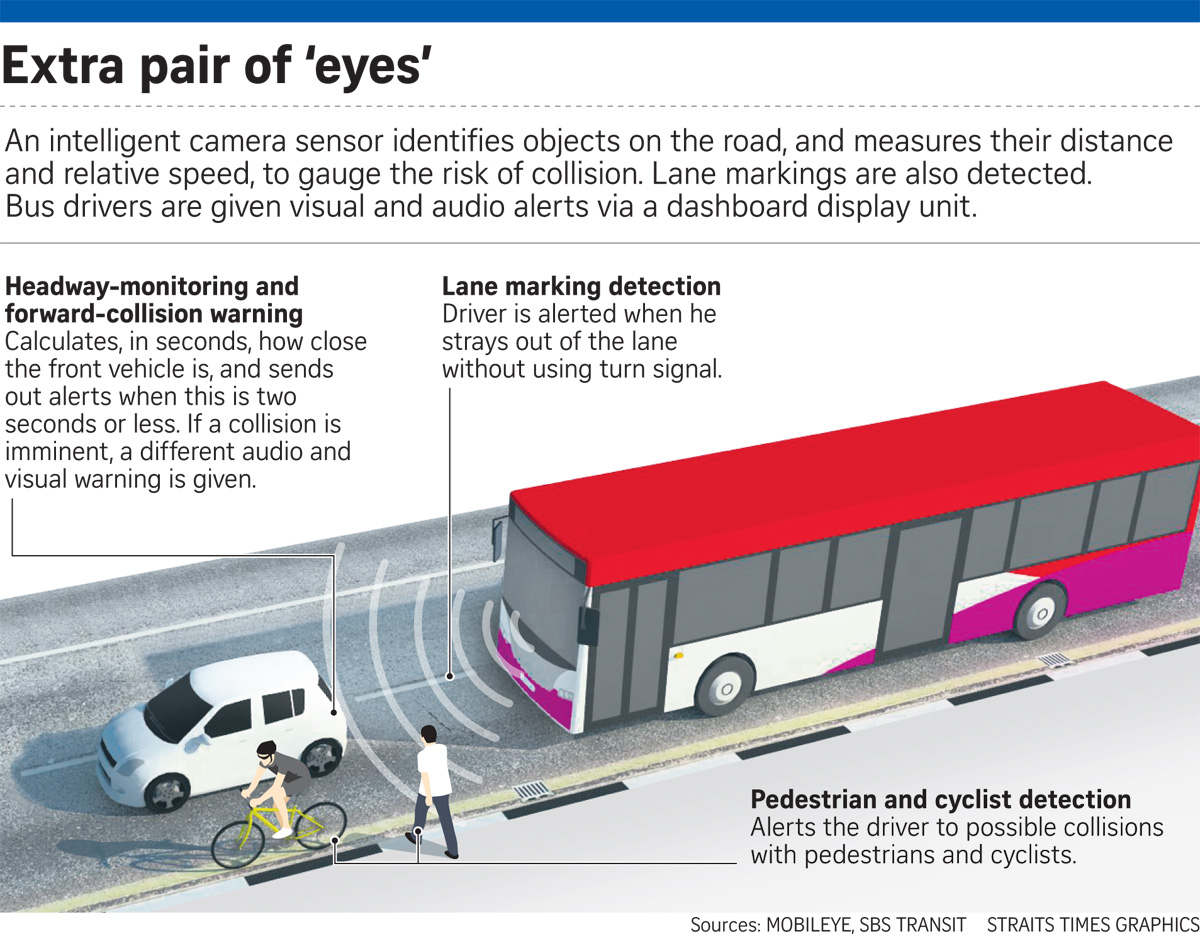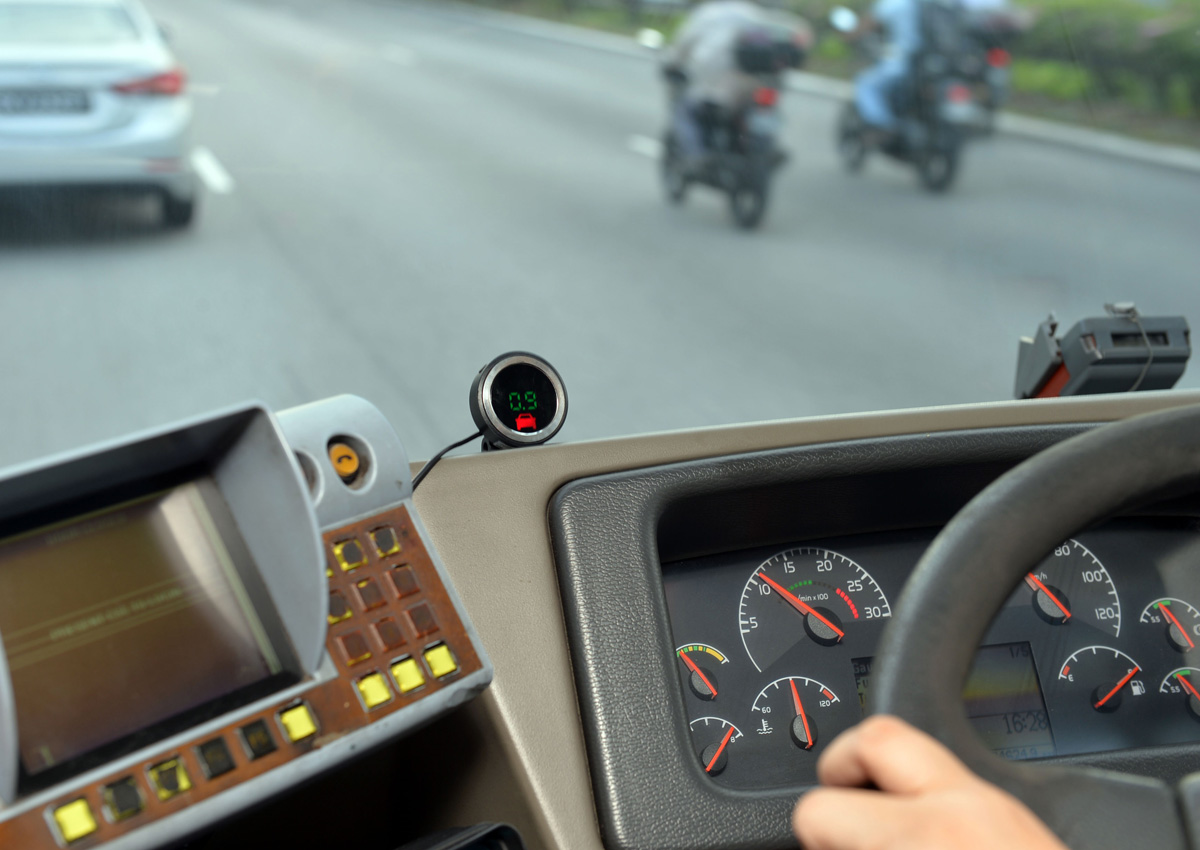SBS Transit’s bus drivers will soon get an extra set of special eyes to help them look out for vehicles, pedestrians and cyclists on the roads.
The intelligent camera sensor, called Mobileye, will be mounted at the front of the bus and alert drivers through a dashboard display unit when they are too close to the vehicle in front, and if a pedestrian or cyclist comes into their path.
SBS, the country’s biggest bus operator, plans to install the Israeli-designed advanced driver assistance system (Adas) on more than 3,000 buses by the end of 2018, The Straits Times has learnt.
Last month, the company awarded a $1.3 million contract to local distributor Chuan-Fa Auto to install the system on a first batch of 750 buses by the end of this year.
SBS chief executive Gan Juay Kiat said: “Mobileye is a system that aids our bus captains by serving as an extra pair of eyes to alert them to potential risks that may come into their paths. This reduces the incidence of accidents.”
SBS is believed to be the first operator in Singapore to have an Adas installed across its entire fleet.
The Mobileye system is also able to detect lane markings, and will alert drivers when they stray out of their lanes without using their turn signals.
Warnings are given to the driver in the form of visual and audio alerts through a small dashboard unit.
For example, if the “headway” or the following distance between the bus and the vehicle in front is two seconds or lower – a parameter customised by SBS – an alarm will sound and an icon of a car will light up on the display unit.

The Mobileye sensor is able to continuously monitor the distance and relative speed of objects on the road, and provide early warnings to drivers to make the necessary corrections.
SBS has finished testing Mobileye on 30 buses being used for passenger service in a trial that began in November 2014.
It involved a “blind phase” in the first few months, during which the Mobileye system was installed and turned on, but the dashboard display unit for bus drivers was not activated.
This gave SBS the opportunity to measure the bus drivers’ driving behaviour and to log down the number of warnings which were triggered by the system.
Mr Ng Chin Sheu, senior manager for bus safety at SBS, said: “After Mobileye was switched on for the bus captains, and with coaching from instructors on how they drove, we found there was a marked improvement in their driving behaviour, with fewer triggers logged.”
SBS bus driver Kang Yen Yen, 39, who was involved in the pilot, said in Mandarin: “Once, a small car suddenly cut into my lane, and with the Mobileye warning, I managed to slow down and avoid a collision.”
“While on the road, we are always mindful of safety, so we are not totally reliant on Mobileye. Still, it’s an extra help,” she said.

This article was first published on May 6, 2016.
Get a copy of The Straits Times or go to straitstimes.com for more stories.























